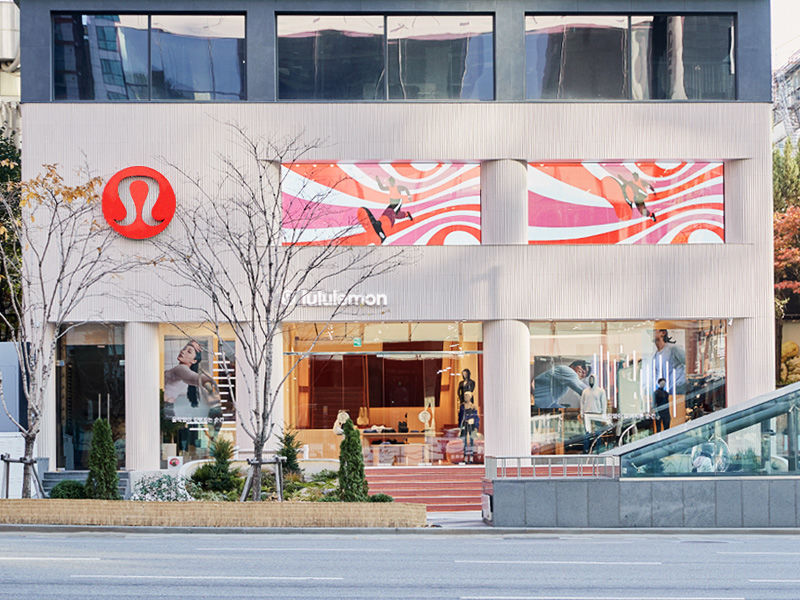Investors who bought shares of lululemon athletica (LULU 4.25%) at the height of the COVID-19 fears in March when the stock briefly traded around $150 per share would already be sitting on a two-bagger. The company just reported solid results for the fiscal first quarter. The highlight was standout performance from the direct-to-consumer channel where robust growth in e-commerce helped Lululemon report a small profit even with stores closed.
Investors have been high on the company's long-term growth prospects across growing digital and international sales, and the latest results showed continued momentum in these areas. Still, with the stock trading at a frothy price-to-earnings (P/E) ratio of 64 times forward earnings estimates, some investors might be tempted to lock in a big short-term gain. But taking profits now could be a very costly mistake.

Image source: Getty Images.
What's underpinning Lululemon's momentum
Lululemon was already one of the hottest retail growth stories before the pandemic, but COVID-19 accelerated the advantages the company has in its digital sales channels. E-commerce growth accelerated from 41% during the fiscal fourth quarter to 70% last quarter on a constant-currency basis. The direct-to-consumer channel, including e-commerce and mobile sales, made up 54% of total revenue. This was an incredible shift that reflects Lululemon's loyal customer base and a strong response to its latest products.
The company has a grassroots foundation driving the growth of the brand. It has 2,000 ambassadors around the world and a team of guest educators helping gather feedback from customers and cultivating a global community around the brand using digital marketing and social media.
At an Analyst Day presentation in April 2019, CEO Calvin McDonald mentioned that more than seven million active guests shopped at Lululemon during 2018. Lululemon had a high guest retention rate of 92% among its top 20% of spenders. "When you compare that to other brands, that is very high," McDonald said. "Our most loyal [customers] are incredibly loyal."
Lululemon hosts sweat classes and other outdoor events designed to build a sense of community around the brand too. Two experiential stores were opened last year in Chicago and the Mall of America near Minneapolis that provide locker rooms, healthy foods, and an enhanced shopping experience. Adding these lifestyle features should translate to further robust growth over time.
McDonald sees Lululemon's market opportunity stretching way beyond the sports apparel market, which is big enough on its own at $115 billion, according to Euromonitor. Lululemon is starting to tap the $3 trillion global wellness market. Last year, it tested a line of self-care products and is currently in the process of rolling out a loyalty program -- again, building that bond between brand and guest.
McDonald also announced last year at the Analyst Day that the brand has plans to enter the footwear market. Lululemon learned some things about what customers want in a shoe from its previous partnership to sell athletic footwear from the brand Athletic Propulsion Labs (APL). Despite the competition in footwear, McDonald believes there are gaps in the market where they can address customer needs.
The costs of selling too soon
Lululemon finished fiscal 2019 with $3.98 billion in revenue. It's only a fraction of Nike's $41 billion top line, but that wide gap hints at the opportunity in front of the company. Lululemon was reporting strong revenue growth before COVID-19 while also seeing improving margins and growing earnings.
Consider that in fiscal 1994, Nike sales declined 3.6% to $3.79 billion. At the end of Dec. 1994, Nike stock traded at a P/E of 54, not quite as high as Lululemon's current 64 P/E but still frothy.
If investors had decided that Nike stock was overvalued and sold their shares, they would have missed a 4,000% gain over the next 25 years. That's enough to turn a $10,000 investment into $400,000.
Lululemon operates in a competitive industry, but it's certainly expanding like it wants to be the next Nike. The company is building a powerful brand built on grassroots initiatives and millions of loyal customers. E-commerce comps skyrocketed 170% in Europe last quarter, and management is continuing to move forward with new store openings in Greater China. Adding branded footwear could be a huge incremental sales opportunity for the brand.
The bottom line: The opportunity cost of missing out on big gains over the long haul is too high to worry about locking in a measly 100% gain off the recent lows.







